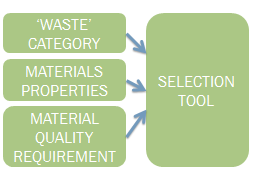
Availability and access to raw materials is one of the most critical challenges facing future manufacturing applications. The concept of closed-loop economy has recently been introduced to promote reclamation and recovery of material content from end-of-life product waste for further reuse. However at present, in most recycling applications, material quality is often downgraded (down-cycled) which severely limits the scope for further use of the recycled materials, and only results in ‘prolonging’ the use of materials before having to send them to landfill. Therefore, the vision of a ‘continuous approach’ for recycling and reusing materials will require significant improvement in our recycling technologies, processes and applications.
In this context, reconfigurable processes are playing an increasingly vital role in improving the flexibility of manufacturing systems. Such processes have a number of key characteristics and provide various benefits including: modularity, scalability, customisability, convertibility, integrability and diagnosability. This research explores the application of these key characteristics within recycling systems, towards significantly improving the quality of recycled materials (up–cycling). The example of ‘footwear recycling’ will be used to demonstrate the requirements and potential benefits for such reconfigurable recycling processes. Worldwide footwear production reached 21 billion pairs in 2011 with an estimated 10% of this global figure recovered for reuse and recycling. This represents a significant opportunity for improving recycling systems and processes within this industry, in particular in applications where a wide range of material mixtures within post-consumer product waste needs to be sorted, separated and recycled.